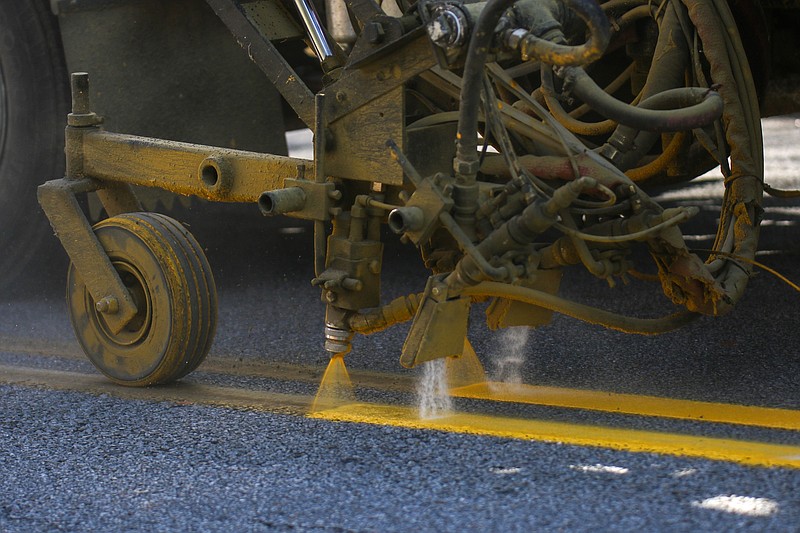Chattanooga has plenty of ambitions for its infrastructure.
It was just this past summer that Mayor Tim Kelly introduced an inspired Parks and Outdoors Plan. The long-term venture includes plans to create 16 miles of new greenway trails, develop seven new neighborhood parks, conduct upgrades at 19 parks, add four new facilities and add 28 new miles of paddle trails.
All of that sounds great, but there must be a major push for accessibility and inclusion for the many bicyclists who will visit these greenways and parks. Because right now the city is barely breaking ground in accommodating them on our roads.
And so it was seen with much optimism that the city is realigning Central Avenue to improve safety for all road users. The street's lanes will be reduced and redesigned to include bike lanes.
Central Avenue was identified as a future "shared road facility" in the city's first bicycle facilities plan, developed in 2002.
And the future is now — hopefully.
It's taken some time to make several Scenic City streets more inclusive of every mode of transportation, such as bikes. Unbeknown to most people, bicyclists have the same rights as motorists.
Shared road, shared responsibility
Every form of transportation has a purpose. And all are protected by state and local law.
According to the Department of Transportation, a bicycle has the legal status of a vehicle in Tennessee. Therefore, cyclists have the same rights and responsibilities as drivers.
Some might be worried that taking a road like Central Avenue, already narrow and busy with commuter traffic during morning and afternoon rush hours and restriping it with bike lane, will create more problems. But the reality is that the addition of bike lanes will save time for both motorists and cyclists. Tennessee law states that drivers have to give bicyclists, riding on the same side of the road, three feet of room to ride. A 2009 city ordinance placed the same law into effect.
It's a no-brainer that Chattanooga should include bike lanes to accommodate cyclists.
Adding these lanes increases the amount of margin, which means that commuters have a larger visual space for maintaining safety in turning and avoiding fixed obstacles. The space will give bus stops more room for picking up riders.
And if anything, the bike lanes will hold cyclists accountable for obeying the rules of the road.
Another group that will benefit from bike lanes are pedestrians.
Walking on Main and Broad streets at times is dangerous because of the number of cyclists who choose to ride their bikes on sidewalks. Cyclists pedaling on a sidewalk must yield the right of way to pedestrians and must give an audible signal before passing, according to Tennessee law.
State law permits sidewalk riding unless prohibited by local ordinance. In Chattanooga, there doesn't appear to be one code that addresses bikes on sidewalks.
Let's not overlook the growing popularity of electric bicycles. Downtown has plenty of e-bike stations where people can grab a bike and take it for a spin.
State law says electric bicycles can't be on sidewalks unless a city creates an ordinance or resolution permitting it or if the power is turned off, at that point functioning as a regular bike. There's currently not a city ordinance that addresses the use of e-bikes on sidewalks. There was an ordinance in 2021 that addressed dockless e-scooters and e-bikes.
Every goal is connected
Creating more bike lanes and educating motorists, cyclists and pedestrians alike about roadway etiquette will go a long way to supporting Kelly's park plan and ensuring accessibility to these valuable green spaces.
Currently, 32% of residents have a public park or trail near their home, according to the city's Department of Parks and Outdoors. The city wants that figure to rise to 55% over the next 10 years. That would require filling the shortage of public park space that the city has identified at 443 acres.
If there's a park close to a neighborhood, how many of those residents would choose to hop on a bike and cycle over to the swings and trails? Bike lanes will be critical to connecting people to parks.
And of course, bicyclists are going to have to actually use these lanes for the lane additions to be worth it.
Pedestrians, bicyclists, motorists — all are connected through transportation. And it's the city's job to ensure that we have a transportation system that is built on public safety.
The bike lanes on Central Avenue are a great example of the city's evolving approach to its transportation infrastructure. They also are a large and welcome step toward road inclusion that will give every Chattanoogan a sense of safety.
